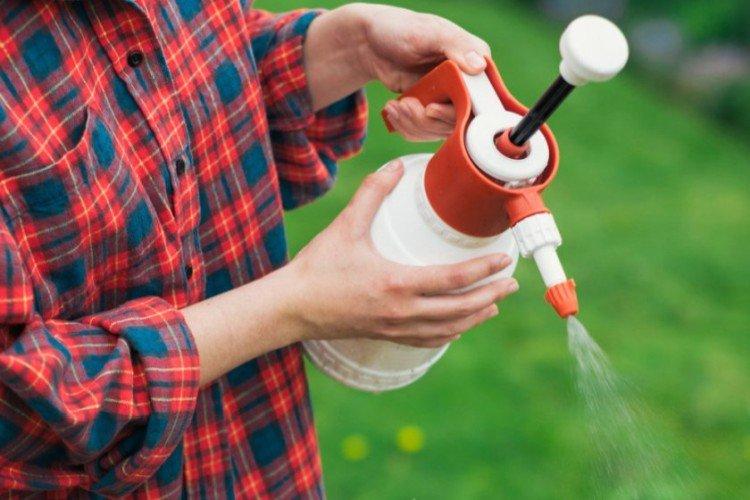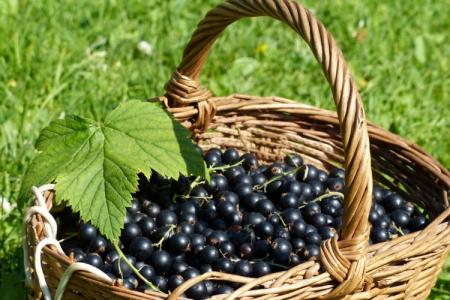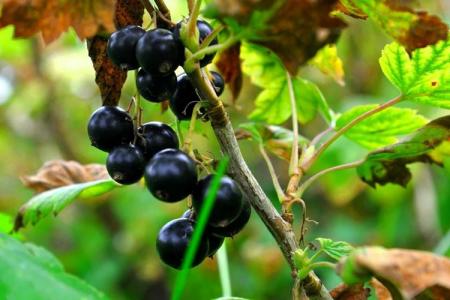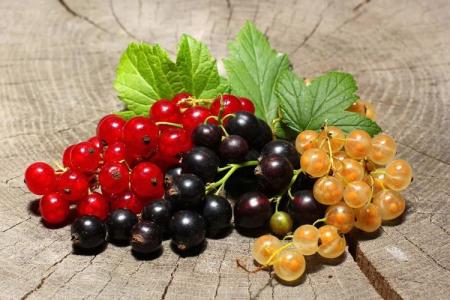
Currants are a real garden treasure, because its berries, leaves, flowers and roots are equally useful. She is the undisputed leader in vitamins and minerals. But in order for the currant to really please the whole year, you need to take care of it in early spring! We will tell you what to do so that the bushes do not get sick and are not attacked by pests!
Diseases of the currant
Most often, currants are affected by various fungal diseases that can be caused by improper care or bacteria. Anthracnose infects the leaves, leaving chaotic brown spots on them. Gradually, they completely cover the plates, and they simply die off.
Another fungal disease for its characteristic appearance is popularly called rust. Red spots appear on the leaves, slightly swollen on closer examination. Less common is white spot or septoria, which manifests itself as whitish spots.
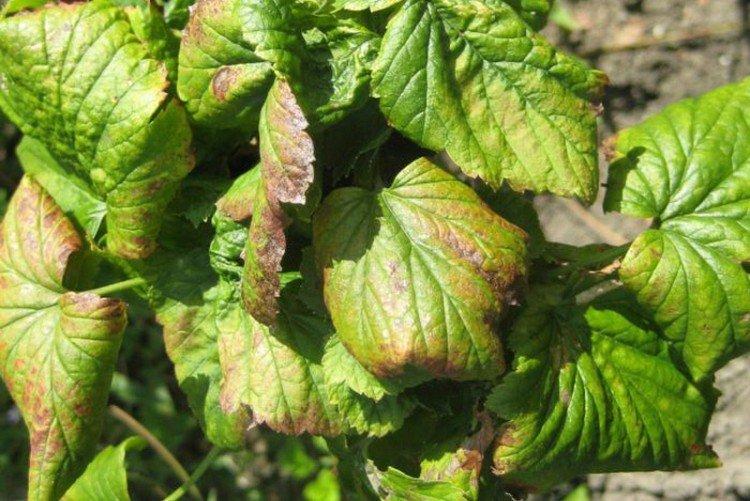
Ascochitis is a fungus more common in red currants. With such a lesion, brown spots in the center of the leaf also become slightly folded. But the cercospora, similar to it, affects red, black and white varieties. In the middle of the brown spots, light midpoints appear, and then they turn into a two-sided bloom.
Spheroteka or powdery mildew in a short time can destroy the entire currant bush and spread to neighboring ones. It manifests itself in a white, gradually darkening bloom on the leaf plates. Terry is a dangerous viral disease, due to which the leaves are deformed and wither, the smell disappears and the crop is lost.

How to treat currants in the spring for diseases?
Before processing the currants, cut off all diseased and damaged branches, frozen shoots and diseased buds from the bush. Be sure to remove the old leaves around, sprinkle the soil with ash and loosened it up. So you will immediately get rid of favorable conditions for the fungus and parasites that winter safely around the bush.
Boiling water treatment for fungus
The easiest way to start and combine it with others is boiling water. After winter, scald the bush, and the heat will kill all bacteria and disinfect everything around. At the same time, boiling water will kill pests and their larvae that have overwintered among the branches.

Processing currants with ash from the fungus
Dilute 100 g of wood ash in a bucket of water and use this solution to prevent any fungal diseases of the currant. Its advantage is that it is very delicate and environmentally friendly, so the ash can be used even if the leaves have already formed. Repeat spraying 3-4 nights in a row.
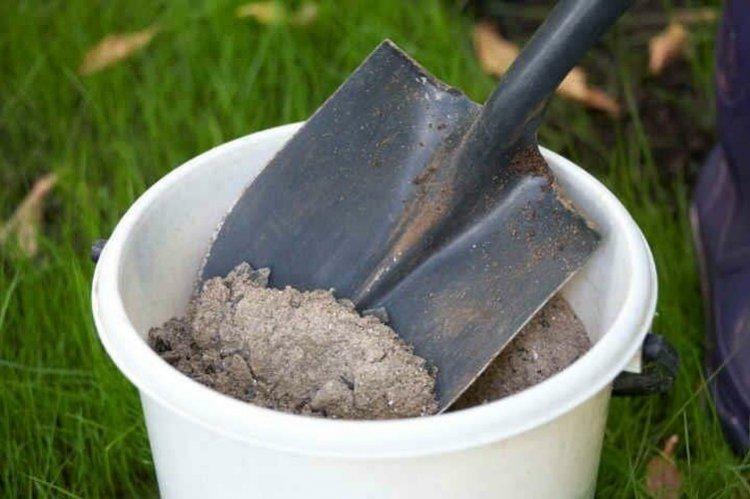
Powdery mildew treatment with foundation
Dilute 15 ml of foundationol or 100 g of copper sulfate in a 10-liter bucket of water. With such a solution, you need to process not only the bush, but also water all the beds of currants. Contact fungicides based on copper oxychloride or sulfur are well suited.
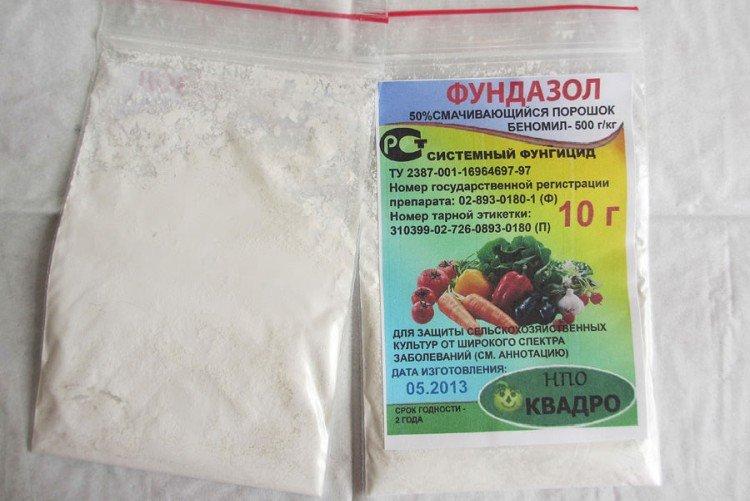
Powdery mildew treatment with soap solution
At the initial stage of the disease, there will be enough and very delicate measures. Prepare a solution of soda ash and laundry soap for spraying currants. For a bucket of warm water, you will need 50 g of both ingredients.
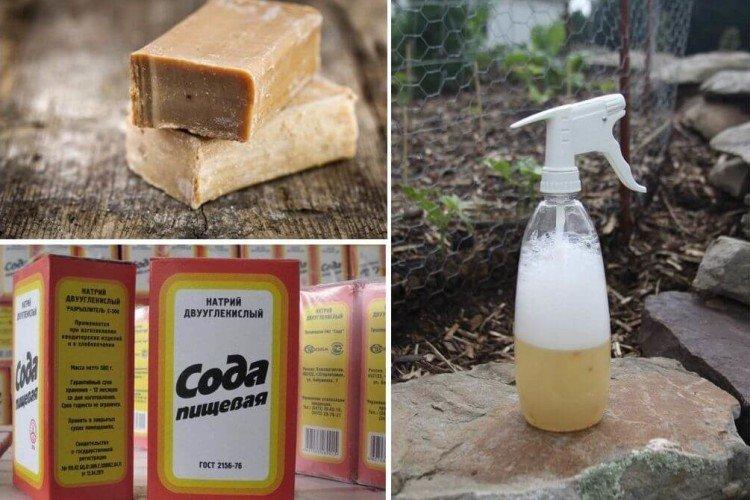
Processing currants from anthracnose
The best remedy for fighting anthracnose before the first leaves appear is inta-vir. Before flowering, Bordeaux liquid or a concentrated solution of ferrous sulfate in a proportion of 300 g per bucket is suitable. Spray the bush twice in one evening at intervals of half an hour.
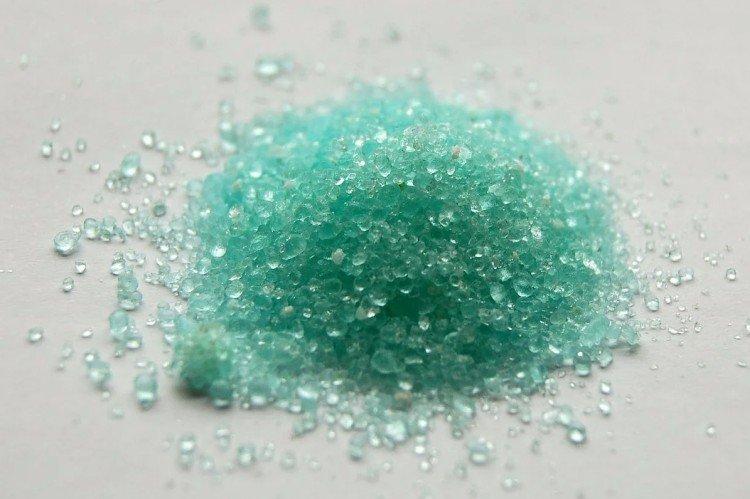
Bordeaux anti-rust treatment
Best of all, Bordeaux liquid helps against rust and spotting. Its concentration depends on at what stage of the growing season the currant bush is. Use a 3% solution before bud break, and then 1%. Pay attention to propiconazole-based systemic fungicides.
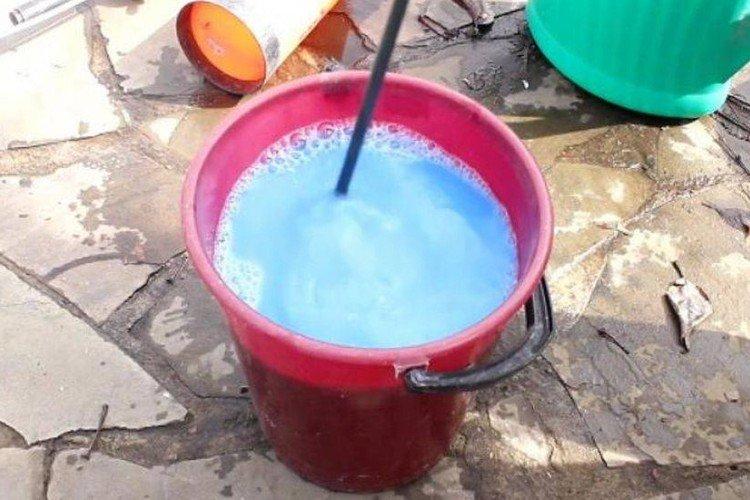
Common pests of currants
The most dangerous "nominal" pest of currants is the currant mite, which affects the kidneys. Because of him, the shrub stops developing, and one cannot even dream of a good harvest. He also spreads a dangerous viral disease - terry.
Black currant often suffers from glass butterflies with transparent thin wings. They eat up the buds at the very base and destroy the shoots. Caterpillars of this butterfly winter right in the core of the branches - this is clearly seen in the section.
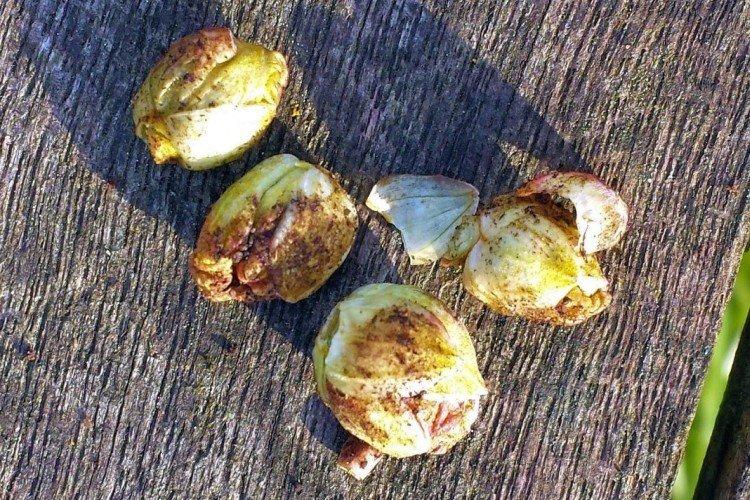
Caterpillars of the currant moth completely eat away the entire contents of the kidneys. They are very nimble and even more voracious, and it is almost impossible to notice the damage visually.
On the underside of the leaf plates, a yellow aphid successfully takes root, which sucks out all the juices from the leaves. The gooseberry sawfly larvae quickly and actively eat the leaves, so they can leave the bush completely naked.
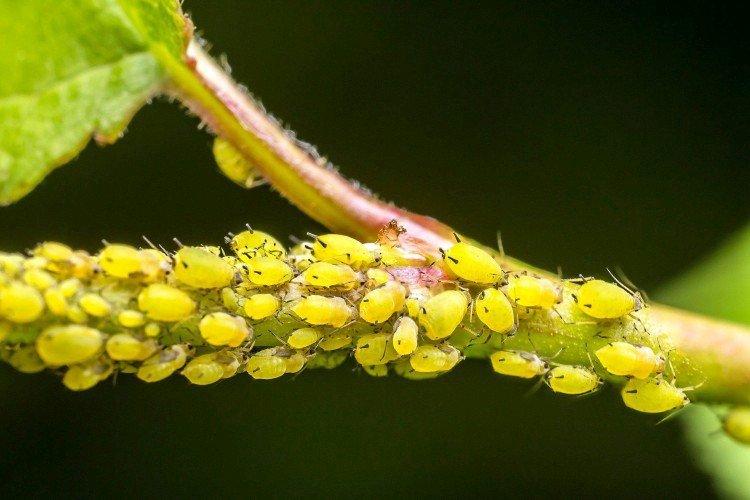
How to treat currants in the spring from pests?
For the treatment of currants from pests, contact and systemic preparations are used. They differ in that the former create a semblance of a film on the leaves. The second act quickly, within the first hours. Be sure to observe the timing of spraying, because currants develop literally every day.
Furanone tick treatment
Spray the bush and fields around it with furanone, chlorophos, or other phosphonic acid derivatives. Colloidal sulfur in a ratio of 100 g per bucket of water is excellent. Malathion-based malathion has the same effect - 20 g per bucket of water. It is important to process the currants before the buds begin to swell, otherwise it will be extremely problematic to remove the tick.

Treatment with boiling water for ticks
Another way to get rid of a currant mite is to boil the bushes. This is the simplest and most environmentally friendly, but quite effective method. You need to scald currants at the very beginning of spring, while the buds are not yet swollen.
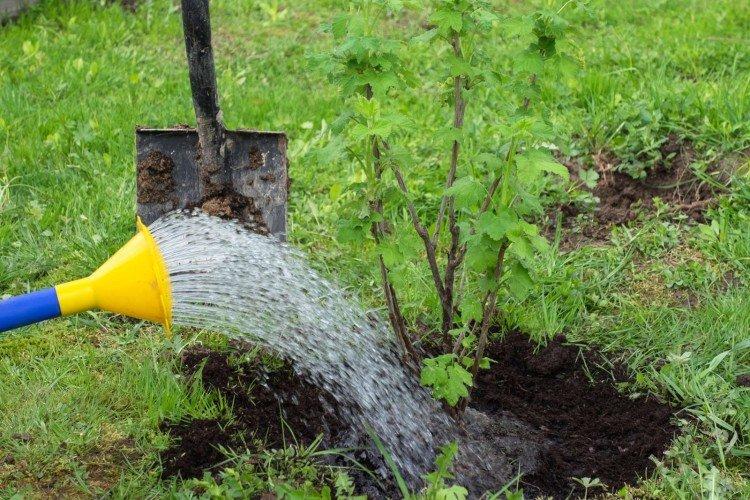
Processing currants from aphids
If you managed to find aphids in early spring before the buds began to bloom, urgently treat the currants with furanone or any of its derivatives. If the leaves have already appeared, use Bordeaux liquid, karbofos or copper sulfate.
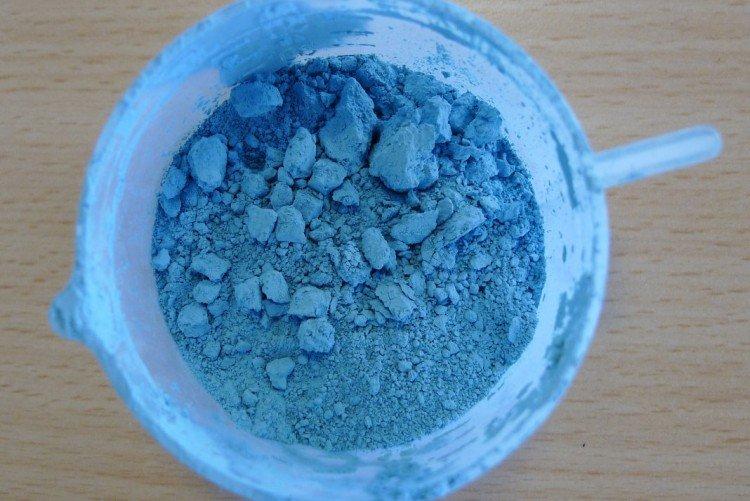
Processing with infusion of tobacco from butterflies
Add 200 g of tobacco and ash to a bucket of warm water, and then let the mixture stand for a day. Filter the solution well and discard debris to avoid clogging the sprayer. We recommend processing currants with this mixture three times a week.
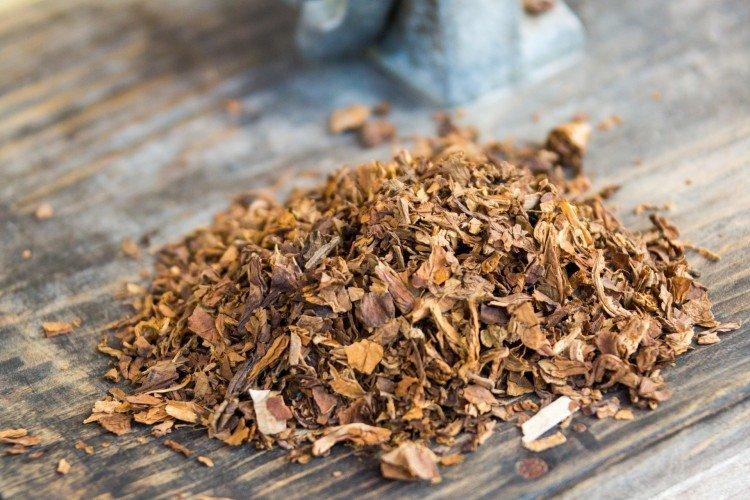
Processing with infusion of garlic from caterpillars
To get rid of caterpillars and other pests in early spring, prepare a strong infusion of garlic. Steam 100 g of cloves with a liter of water, leave for a day and strain. Add another 4 liters of water and sodium 20 g of laundry soap to the infusion. This is enough to spray about a dozen medium sized currant bushes.
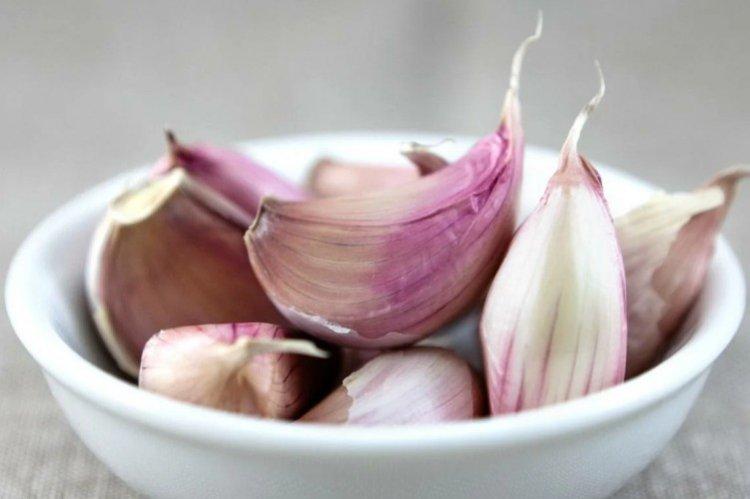
Processing with onion husks from caterpillars
This method is similar to the previous one, but instead of garlic infusion, you need an infusion of onion peel. A 10-liter bucket of water will take about a kilogram. Pour boiling water on the onion and husk, let it stand for 6 hours, strain and process the currants with it every other day.
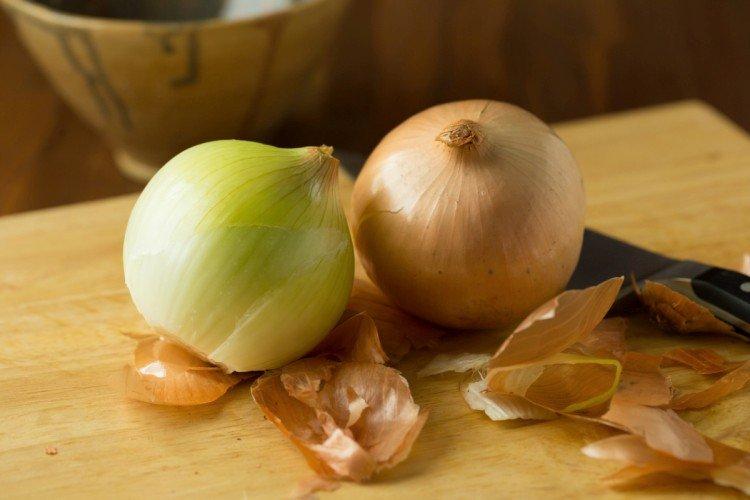
How to carry out the processing correctly: tips
Remember that even domestic methods can be hazardous to plants, not to mention chemical insecticides and fungicides. Therefore, when processing currants from diseases and pests, it is fundamentally important to follow the rules, dosages and safety precautions.
1. Use room temperature water to prepare the spray solution. Filter it in advance, or at least let it settle to avoid unexpected chemical reactions. For some drugs, hot water is needed - then this is indicated on the package;
2. Any solution (homemade or from a store-bought powder) first strain through the filter. It is important that the sprayer is not clogged and that the product is evenly distributed;
3.If you use chemicals, be sure to wear protection, goggles, gloves and a respirator;
4. Process currant bushes after spring pruning so as not to waste the preparation. At the same time, fungicide treatment will additionally protect the places of fresh cuts;
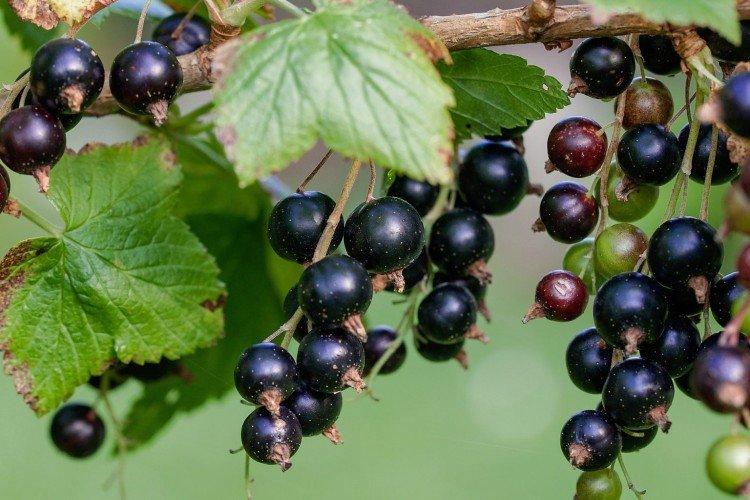
5. Do not spray currants in sunny weather, because the preparations will dry out quickly and do not have time to act. In addition, on a hot day, sunburn may appear on the leaves;
6. Process the currants early in the morning, right after the dew dries. Or wait until late in the evening, when the sun has completely hidden;
7. Do not spray the currants immediately after rain, because no solution holds on wet bushes. Even if it does not drain, its concentration will decrease, and with it, its effectiveness will also decrease;
8. Do not use any insecticides for spraying if the currants have already bloomed. But you can treat diseases;
9. If, after processing, it suddenly rains, the procedure will have to be repeated when the weather stabilizes and the currants dry out.
